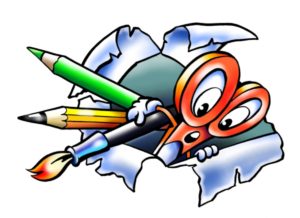
Tools such as storyboards, writing frames, scaffolds, and templates allow kids to use their analytical skills. For instance, if your child can remember the acronym POWER, it will help get him started: P is for plan, O is for organize, W is for write, E is for edit, and R is for revise.
Another visual prompt: Draw a hamburger and then lines pointing to the upper and lower buns, and the meat. On those lines write: “the topping: introduction, topic sentence, or introductory paragraph.” Under that: “The filling: the details and supporting ideas.” And under that: “The ending: the conclusion or summary.”
Proofreading and editing are other stumbling blocks for some kids, especially those with dyslexia and dysgraphia. Here, a memory trick might work: Have your child go through his piece four separate times, each time looking for a different type of error (to maintain maximum focus). He could do this using any of the following acronyms: “COPS” (capitalization, organization, punctuation, spelling) or “STOPS” (sentence structure, tenses, organization, punctuation, spelling).
All these visual organizers, along with self-feedback checklists, are available from www.retctrpress.com and www.linguisystems.com.
Excerpted from Jump-Starting Boys: Help Your Reluctant Learner Find Success in School and Life, by Pam Withers and Cynthia Gill (Viva Editions). All references (footnotes) contained in the book.

